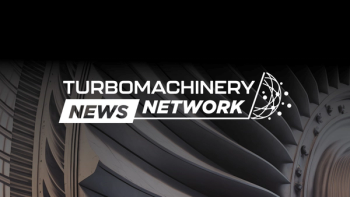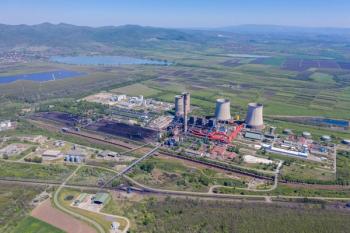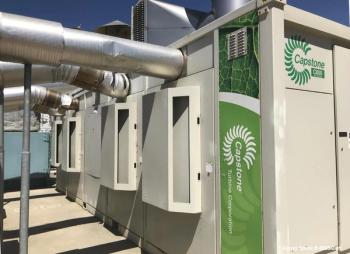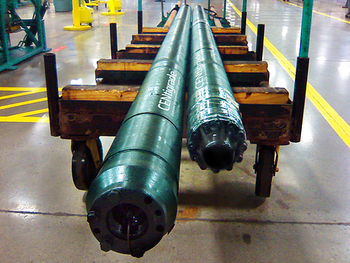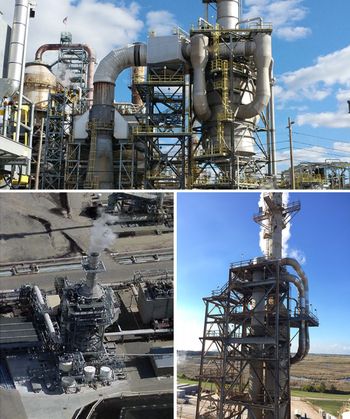
- July/August 2025
- Volume 66
- Issue 4
Energy Industry Outlook: Strategies to Tackle Supply Chain Issues, Power Demand, and Decarbonization
Key Takeaways
- The industry faces challenges like labor shortages, rising material costs, and supply-chain constraints, impacting operations and strategic planning.
- Companies are investing in modular solutions, energy efficiency, and technological advancements, including AI and decarbonization technologies, to meet rising energy demands.
Turbomachinery faces challenges like labor shortages and supply chain issues, but innovative solutions help the industry meet growing energy demand.
In spring 2025, we surveyed our readers about the state of the industry and the dynamic factors shaping the turbomachinery sector. Based on the survey results, we gathered insights, identified trends, and asked about solutions to ongoing challenges, such as supply chain constraints, rising material costs, labor shortages, and increasing power demand. With more than 100 respondents, we collected comprehensive perspectives on five main areas: industry challenges, external factors affecting the industry, solutions, current and planned investments, and recent advancements.
The Energy Boom
With the boom of AI and data centers, surging power demand, a rollback of U.S. support for clean energy in favor of fossil fuels, and backlogged gas turbine orders, the need for comprehensive and complex energy solutions is greater than ever.
“The power landscape is shifting faster than we’ve seen in decades,” said Doug Machon, VP of Business Development at IHI Power Services Corp. (IPSC). “Electricity demand is surging, driven in large part by the exponential growth of data centers and AI infrastructure, as well as increased electrification across sectors like transportation and manufacturing. Our customers are being asked to maintain grid reliability, manage aging assets, integrate battery storage, and stay aligned with long-term decarbonization goals—all while navigating market volatility and evolving compliance demands. It’s one of the most dynamic and operationally demanding periods in the history of U.S. power generation.”
OEMs like Baker Hughes are securing contracts for equipment deliveries specifically for data center projects. The company signed an agreement for 16 NovaLT gas turbines to power Frontier Infrastructure Holdings’ data center projects in Wyoming and Texas. It’s also providing TURBINE-X Energy with its NovaLT gas turbine technology and auxiliary equipment for various data center projects across North America.
Another example is the joint venture between Engine No. 1 and Chevron, which aims to build a multi-GW-scale, co-located power plant and AI data center using GE Vernova’s gas turbine technology powered by electricity generated from domestic natural gas.
Environmental factors, such as record temperatures and natural disasters, grid instability, and increased wear and tear on power plant equipment, are also significantly impacting the industry.
“Events such as the widespread blackout in Spain and Portugal this spring have underscored how rapidly a disturbance can cascade across interconnected systems, reinforcing the need for fast-reacting, reliable assets that support grid resilience,” said Giuseppe Tilocca, Technical Lead at ETN Global.
"Many power plants have been in service for decades, and the shift to more frequent start/stop cycles—driven by variable load demand and renewable integration—is accelerating wear on key systems,” Machon said. “Mechanical fatigue, thermal stress, and corrosion are all increasing as units operate less predictably than in baseload conditions. Weather-related stress in certain geographic areas only adds to the challenge.”
Top Industry Challenges
Survey respondents ranked several key challenges facing the turbomachinery industry. The top three are:
- Labor shortages/skills gap (54%)
- Rising material costs (52%)
- Supply-chain constraints (51%)
Labor Shortages and Skills Gap
The energy sector faces a critical challenge in workforce skills and availability, driven by experienced personnel retiring, an ongoing skills gap, and the rapid integration of new technologies like AI and digitalization.
“The turbomachinery industry is facing a deepening workforce crisis, marked by declining vocational interest, an aging labor pool, and increasing skill mismatches,” Tilocca said. “Unlike in other energy roles, skills in gas turbine operations and retrofits are highly specialized and not easily transferable. Despite rising demand, most energy companies report difficulty hiring qualified candidates, particularly for manufacturing, installation, and repair.”
OEMs like Atlas Copco work with universities and participate in job fairs to attract talent early in their careers and offer opportunities within the company. “We utilize various social media channels to reach potential talent, and we also employ AI to enhance efficiency and address potential labor shortages,” said Ulrich Schmitz, the Vice President of Marketing in the Gas and Processing Division of Atlas Copco.
Click here to listen to Schmitz's interview with Turbomachinery International, discussing pressing issues facing the turbomachinery industry.
IPSC sees people as its most valuable asset. “In today’s market, recruiting and retaining top talent requires intention,” Machon said. “IPSC keeps the focus on building a strong internal culture and a clear path for professional development. That includes formal skills training, leadership development programs, and a performance structure that prepares employees for the role they have right now and for what’s next. We also collaborate closely with local communities in harder-to-staff regions to create workforce readiness programs. Whether it’s internships, apprenticeships, or community partnerships, we’re working to grow the next generation of technical talent from the ground up.”
Organizations across the industry, like ASME’s Workforce Development Group, ETN Global’s Young Engineers Committee, the Turbomachinery Lab at Texas A&M, and the Southwest Research Institute (SwRI), promote learning, training, and education in the turbomachinery industry.
“[To address the need for qualified professionals], education and training initiatives are expanding globally,” Tilocca said. “Vocational and higher education programs are being modernized to reflect current industry needs, especially in digital technologies, system integration, and energy efficiency. The whole industry needs a collaborative effort to bridge this gap, making workforce development a strategic pillar for the sector’s long-term resilience.”
SwRI’s mission is to benefit the government, industry, and the public through its research, “so we are very active in trying to enhance and enable technology learning across the industry,” said Tim Allison, Director of R&D in the Machinery Department of SwRI. The Institute runs a monthly webinar series where “we freely talk about turbomachinery or energy system technologies” and offers several on-site trainings.
The Turbomachinery Laboratory at Texas A&M trains graduate students in industry practices, ensuring they are well-prepared for their careers. And throughout the year, the team also organizes several short courses and designs the technical agenda at the Turbomachinery & Pump Symposium to support education and enhance the professional development of engineers.
Listen to industry leaders discuss strategies —collaborating with academia, partners, and networking—to cultivate a skilled workforce and address labor challenges.
Rising Material Costs
Rising material costs are posing significant challenges for manufacturers, as they struggle to maintain competitive pricing while ensuring the quality and performance of their products. Many manufacturers are working to expand their supplier base, localize their efforts, and diversify their options to buffer disruptions such as geopolitical events and natural disasters.
“Hanwha is actively working to secure stable international supply chains by expanding its network of raw materials and components and reducing dependency on any single region or supplier,” said Kihun Do, VP and General Manager of the Equipment Business Division at Hanwha Power Systems. “We are also planning to build packaging and service centers in the Middle East and the United States, and an after-service storage facility in Europe. Operating various overseas service centers helps provide more direct control over the supply chain and transportation costs and reduce the lead time to handle customers’ needs.”
Atlas Copco is also addressing rising material costs by leveraging its global footprint. “We have factories in various regions, including the United States, Europe, and Asia, that provide us with a broad pool of qualified vendors,” Schmitz said. “This approach also helps when tariffs are involved; we can produce more locally if we have suitable suppliers. That’s one of our key initiatives.”
Duke Energy has developed strategies to ensure materials are ready and available to respond to emergencies, including storms. “We are looking ahead to identify risks and partnering closely with other business units within the company to be proactive,” said Shawna Berger, APR/Enterprise Communications at Duke Energy. “We took the lessons learned from being reactive during COVID-19 and applied them to our proactive strategy today. We’re building a stronger supply chain that is data-driven, customer-centric, and resilient against dynamic supply markets.”
Matthias Grapow, VP of Business Development and Digitalization at Everllence, said in such a volatile and fast-changing political environment, providing fixed solutions is extremely challenging: “Local procurement is one approach we’ve used for years, and we continue to explore it where possible. However, expanding local sourcing depends heavily on the capacity and stability of suppliers, who are themselves navigating uncertainty. Given the long-term and global nature of our business, we focus on flexible strategies rather than rigid solutions. Devising solutions where the situation changes daily and for a business with long lead times is a loss of time and effort.”
Supply-Chain Constraints
More than 51% of respondents identified supply-chain constraints as their primary challenge. The industry is responding by utilizing local supply chains, collaborating closely with customers and suppliers, and modernizing or leveraging existing equipment.
“To address the various supply-chain challenges—many of which are industry-wide or arise from conditions beyond our control—we maintain strong supplier relationships and prioritize opportunities to localize our supply chain to serve our distinct geographies,” said Dave Ross, GE Vernova’s Gas Power business CEO and President for the Americas region. “At the same time, we maintain a globally diverse supply chain for operational resiliency.”
In March, GE Vernova acquired Woodward’s heavy-duty gas turbine combustion parts business based in Greenville, SC, to strengthen its domestic supply chain. “Combustion parts, like those manufactured by [Woodward], play an integral role in GE Vernova’s gas turbines, supporting customers’ ability to meet growing energy demands from load growth, data centers, and other areas,” he said.
51% of respondents identified supply-chain constraints
as their primary challenge.
as their primary challenge.
GE Vernova is also investing more than $160 million and hiring over 650 new employees at its Greenville facility to increase capacity to help meet market needs. Most notably, the facility is increasing its production capacity by more than 25% to 70 - 80 heavy-duty gas turbines per year (beginning in the second half of 2026) and will ship approximately 20 GW annually starting in 2027.
Mark Babyak, Vice President of New Apparatus at Ebara Elliott Energy (EEE), said EEE is challenging its suppliers to adapt their sourcing to minimize the impact of tariff costs and remains flexible in adjusting its sourcing strategies to manage market fluctuation successfully.
Many organizations are modernizing existing power plant equipment or retrofitting legacy or existing gas turbines to meet increasing power demands and supply-chain constraints. Investing in upgrades and modernizations also helps organizations stay competitive.
“By jointly defining schedules, anticipating potential bottlenecks, and streamlining procurement strategies, we reduce the risk of disruption and ensure the timely delivery of critical components and services,” said Luigi Coltelletti, SVP of Strategic Marketing at Ansaldo Energia. “A key part of our approach lies in offering upgrade packages that are specifically tailored to be minimally invasive. These solutions require only limited modifications to existing plant configurations, enabling fast implementation and shorter outage durations. This helps our customers maintain high availability while minimizing exposure to volatile material costs and logistical delays.”
ISCP is increasingly supporting its customers well beyond day-to-day plant operations by assisting with acquisition due diligence, plant optimization efforts, and lifecycle strategy development. “Clients are asking for deeper technical insight, especially during M&A activity and when evaluating capital upgrades or retrofit options,” Machon said. “We’ve expanded our capabilities accordingly, tapping into the robust power generation design and deployment expertise of our parent company, which spans a wide range of thermal and renewable technologies.”
Utilities like Duke Energy are partnering with OEMs to preemptively procure equipment, staying ahead of supply-chain bottlenecks and meeting the rising demands of advanced manufacturing, data centers, and population growth. It partnered with GE Vernova for the option to purchase up to 11 HE gas turbines, steam turbines, and other related equipment, including generators. “The agreement allows for turbine delivery to support our current integrated resource plans and to accommodate even the most robust growth scenarios,” Berger said. “Using these turbines at Duke Energy plants also allows us to leverage existing infrastructure, including transmission capabilities, significantly reducing costs and accelerating deployment.”
External Factors
Respondents ranked external factors influencing strategic decisions on a scale from 1 (most impactful) to 7 (least impactful). Global economic conditions were considered the most impactful, with 40% of respondents ranking it first and an average score of 2.24. Next was energy market volatility (2.64), with 24% of respondents ranking it first, and decarbonization and sustainability goals (3.87). Factors considered less influential included advances in digitalization and Industry 4.0 (4.93) and the availability of investment or funding (5.05).
“GE Vernova’s Gas Power business engages in discussions daily with our customers about how to satisfy the growing demand of critical energy markets while maintaining a stable electric grid to support growth, prosperity, and energy security for their communities,” Ross said.
The conversations focus on three key areas: risk management, technological investments, and global supply-chain strategies. “Given the market realities of today—and likely for the foreseeable future—project timing becomes one of the toughest challenges for our customers’ ability to support the electricity demand of their customers.”
Ross highlighted four key considerations for project timing:
- Equipment availability: There is an urgency to lock down manufacturing slots for the long lead items necessary to build a new power plant: gas turbines, generators, transformers, and other electrical gear.
- Engineering, procurement, and construction (EPC) companies’ capacity: Many of the top-tier EPC firms are filling up, and access to skilled labor, technicians, and experienced project managers is a key pacing item.
- Acquiring the required permits and satisfying all regulatory requirements.
- The wait for the grid interconnection queues is, in some cases, pushing projects out.
In terms of technical logistics investments and supply-chain management, GE Vernova is investing nearly $600 million in its U.S. factories and facilities over the next two years to help meet the current growing demand, including a $300 million investment in its Gas Power business globally.
“Given the global nature of energy markets, GE Vernova is focusing on strengthening supply chains to ensure reliability and minimize disruptions caused by geopolitical tensions or other external factors,” Ross said.
Grapow said Everllence recognizes that much of the volatility in today’s energy markets and global economic environment stems from politically driven developments and policies from major global players. “While these external factors do influence the broader landscape, our focus remains on the project, the contract, and the long-term relationship,” he said. “We believe in the resilience of our industry and the critical role we play in the global energy transition. This is not a short-term market; we operate with a long-term perspective, confident that energy infrastructure and turbomachinery will remain vital for decades to come.”
Coltelletti made a similar point: “Despite current volatility and uncertainty, the heavy-duty rotating machinery market remains strong. These technologies will continue to play a critical role in ensuring energy security and enabling the energy transition. Efficiency, operational flexibility, and green-fuel capability are exactly what energy producers need to navigate today’s complex landscape, ensuring dispatchable power, grid stability, and long-
term sustainability.”
Solutions
A total of 61.05% of respondents are opting for modular solutions to meet rising power demands and limited equipment supply. Fewer than one-third (29.47%) are using smaller gas turbines. Among "other" respondents (29.47%; respondents could select multiple options, so totals exceed 100%), notable trends include the accelerated adoption of renewable energy, particularly solar power, a strong emphasis on optimizing and upgrading existing energy infrastructure for better efficiency, and the evolving role of gas-fired power generation. Additionally, there is a recurring focus on improving supply chain dynamics and offering tailored solutions.
“There is a clear and growing global trend toward smaller, modular, and even mobile gas turbine technologies, especially in emerging markets and for decentralized applications,” Tilocca said. He named several factors that are driving this shift:
- Fast start-up and ramp rates make small turbines ideally suited to support intermittent renewable generation and provide ancillary services.
- Lower capital expenditure and shorter deployment timelines make micro-units attractive in rapidly changing or resource-constrained environments.
- Operational flexibility is increasingly valued in power systems dealing with volatility, partial load operations, and localized reliability issues.
- Mobile power solutions are increasingly being adopted to address temporary or remote energy needs.
Modular and Mobile Solutions
“There’s a real sense of optimism in this space. Mobile power is no longer just a short-term solution; it is a strategic enabler for countries and companies looking to build energy systems that are faster, cleaner, and more resilient for the future,” Midhat Mirabi, GE Vernova’s Managing Director of Aero New Units, said in an interview with Turbomachinery International on how mobile solutions give islands like the Bahamas (where it shipped its trailer-mounted TM2500 mobile aeroderivative solution) a means to modernize island power generation systems and provide stable, affordable electricity, especially during summer peak times.
Ross said GE Vernova sees gas power playing a big role in providing dispatchable and affordable power and firming the grid to allow more wind and solar to be integrated. “We continue to see an increase in demand for flexible dispatchable generation where GE Vernova aeroderivative solutions have a strong fit,” he said.
Its trailer-mounted TM2500* mobile aeroderivative solution is what “we call a ‘power plant on wheels,’” Ross said. “We are proud to increase power generation capacity and work toward providing more reliable power for the growing communities and the critical tourism sector. Plus, our aeroderivative solutions help power-plant operators transition from heavy fuel oil to a solution that can burn less carbon-emitting fuels, like natural gas.”
Another example is Siemens Energy and Eaton: They developed a fast-track approach to modular data-center construction with integrated onsite power that provides reliable, grid-independent energy supplies and standardized modular systems. It allows the simultaneous construction of data centers and onsite power generation with grid connection and renewable integration when needed. The configuration offers customers the flexibility to choose the right mix of energy sources with quick construction and start-up times.
The standard configuration of Siemens Energy’s modular power plant concept generates 500 MW of electricity. The size of the plant can be scaled up and down depending on its modular approach. It also includes an optional emission-free clean air grid connection that can be installed either during construction or as a retrofit.
Although its turbomachinery business is not directly focused on mobile power, Grapow said Everllence is seeing its engines increasingly being used in modular and mobile power solutions: “These solutions are deployed in crisis regions around the world to provide urgently needed electricity. Moreover, we are seeing a marked increase in the demand for our emergency diesel generators. They are becoming a key part of future energy security strategies. The large-scale blackout in Spain underlined the importance of reliable backup systems, showing many operators that emergency power is now a necessity, not just a fallback.”
Small to Micro Solutions
“From small- to micro-sized turbines, micro gas turbines remain an area of active innovation and deployment,” Tilocca said. “These compact systems are particularly promising for distributed energy and combined-heat-and-power (CHP) applications in decentralized and integrated settings.”
Baker Hughes, Hanwha Power Systems, and Hanwha Ocean signed an agreement to combine Baker Hughes’ small gas turbine technology with Hanwha’s ammonia combustion system. The goal is to develop dual-fuel small turbines—capable of 100% ammonia combustion with natural gas—for use in marine, onshore, offshore, electric generation, and mechanical drive applications.
Ansaldo Energia has also tapped into the micro-turbine market, as its group portfolio includes 100-kW fuel-flexible microturbines ideal for distributed electricity production and designed to offer high-efficiency solutions for cogeneration and trigeneration. “Modular installation allows us to cover a wide range of different power needs, with each module delivering 100 kW of electrical power and approximately 200 kW of thermal power,” Coltelletti said.
Its AE-T100 microturbines work with different fuels, including biogas, and are tested for burning up to 100% hydrogen in the fuel mix. They can also be powered by external sources, which complement biomass combustion and concentrated solar generation plants.
SwRI is also seeing increased interest in R&D for modular/small-scale distributed generation enabled by low-cost PV and anywhere-suitable energy storage technologies such as pumped thermal energy storage or liquid air energy storage. “With the interest in geothermal power along with the fact that every geothermal application has slightly different well and/or ambient conditions, we are seeing interest in developing modular systems that are easily adaptable to a wide range of sites,” Allison said.
Investments
To stay competitive, 59.80% of respondents said they are investing or planning to invest in energy-efficiency improvements; 42.16% are focusing on predictive maintenance and/or workforce training; and 36.27% are investing in emissions-reduction technologies.
“Every one of our clients is looking for ways to improve plant performance while reducing operational strain and resource consumption,” Machon said.
Tilocca named several trends in efficiency improvements:
- High-performance air filtration systems
- Advanced turbine designs
- Waste heat recovery systems, heat upgrade technologies, and heat pumps
- Traditional gas turbine CHP with electric heating like boilers
Predictive maintenance is a recurring trend in this space. “One of the most important trends we’re watching is the rising demand for near-perfect uptime,” Machon said. “These users are energy-intensive, availability-sensitive, and increasingly central to grid demand. To meet these expectations, facilities will need more than just upgrades—they’ll need a more sophisticated design, highly optimized operations, and a greater reliance on predictive maintenance, automation, and workforce readiness.”
IPSC is already working with clients to prepare for this shift, supporting both new project development and long-term optimization of legacy sites. “As the industry navigates more frequent cycling, tighter margins, and aging infrastructure, asset owners are seeking smarter, more proactive ways to manage reliability and cost,” he said. “IPSC’s expanded fleet-wide training, enhanced CMMS deployment, and analytics-based maintenance planning are all designed to meet these needs.”
Technological Advancements
In terms of technological advancements, companies are primarily considering or investing in decarbonization technologies (51.55%), followed by AI and machine learning (ML) (44.33%), and fuel-focused advancements (29.90%). Advancements are also being made or considered in nuclear or other renewables that pair with turbomachines (25.77%) and auxiliaries and components (22.68%).
Artificial Intelligence
“AI stands to impact every part of the energy value chain, and our industry is seeing significant growth,” Berger said. “It has helped us automate processes, optimize decisions, and predict the likelihood of certain events occurring, among other use cases. Our journey has brought us to a place today where we are ready to scale our AI use cases in support of our energy modernization strategy—the investment in talent and planning for this technology is creating intentionality to deliver the best possible solutions to benefit our employees, customers, and communities.”
IPSC is also actively exploring and integrating AI-driven capabilities into its operations. “While IPSC hasn’t fully deployed standalone AI platforms yet, we’re using advanced analytics to monitor equipment trends and predict potential failures before they occur,” Machon said. “There’s also growing curiosity about AI and ML applications in the O&M space. Most customers aren’t ready to deploy large-scale investments yet, but interest is high. We expect to see more adoption as the technology matures and ROI becomes easier to quantify. We see AI not as a replacement for expertise, but as a multiplier for the knowledge already embedded in our teams and systems.”
Allison said AI and ML’s most significant impacts are already being felt, and this was underscored at Turbo Expo 2025, as the conference explored how AI is changing the industry—from surging power demands to gas turbine technology, computational tools, and turbomachinery design.
“[AI and ML’s] high power demand is driving purchases of gas turbines across the United States, such that lead times are now stated as 7 to 8 years out!” he said. “Whether for power or cooling, data centers require large-scale technologies that align well with the scalability and power density of turbomachinery-based technologies.”
Decarbonization
In the United States, significant investment in decarbonization continues across the industry despite recent policy shifts that have reduced support for the Inflation Reduction Act and indicated a renewed backing for fossil fuels.
OEMs are actively integrating decarbonization into their advanced technologies—from gas turbines and mobile power solutions to key components.
“While all types of energy will be needed to power the future, by improving existing and aging infrastructure, prioritizing workhouse products, and delivering breakthrough technologies, we can meet the growing demands while addressing climate change through decarbonization,” Ross said.
IHI and GE Vernova recently built a large-scale combustion test facility in Hyogo, Japan, to evaluate advanced systems under F-class gas turbine operating conditions. The goal is to develop a commercially viable 100% ammonia-powered turbine by 2030.
“This announcement signals a shift from initial studies on the ammonia value chain to the practical implementation of technologies and engineering projects, aiming to decarbonize power generation by using ammonia as a fuel,” Jeffrey Goldmeer, Senior Director of Technology Strategy at GE Vernova, said in a press release.
Grapow said decarbonization is a key part of Everllence's strategy going forward. “We are focusing on five main areas: carbon capture, industrial heat pumps, hydrogen, green engines, and retrofits. We are seeing strong interest from customers, especially when it comes to CO2 compressors and large-scale heat pumps. There is a clear shift in the market, and many companies are looking for reliable ways to reduce emissions and become more resilient in the face of changing energy costs and regulations.”
Hanwha Power Systems is focusing on accelerating the development of compressors and eco-friendly ship propulsion engines. “Hanwha aims to commercialize a carbon-free ship operation system using ammonia gas turbines by 2028,” said Daekyung Kim, Team Leader, Standard Compressor Sales, Equipment Business Division of Hanwha Power Systems. “It is an innovative technology that can change the paradigm of ship propulsion with eco-friendly gas turbines in the shipbuilding and marine sectors.”
The company is also developing eco-friendly equipment and power generation systems such as an sCO2 engine system, a decompression generator turbo expander, and a gas turbine combustor that can burn hydrogen and ammonia.
For Ansaldo Energia, “Decarbonization technologies are fundamental to the energy transition and thus at the core of our strategy,” Coltelletti said. “We’ve made significant investments in enhancing both the operational and fuel flexibility of our gas turbines, including our GT36 gas turbine.” Its heavy-duty fleet can operate with hydrogen blends ranging from 40% to 70%, depending on the equipment, to reach 100% hydrogen capability by 2030. It’s also actively working on alternative low-carbon fuels such as methanol and hydrotreated vegetable oil, and designing flue gas recirculation solutions for gas turbines.
The same is true for utilities. “Duke Energy continues to evolve as we incorporate low- and zero-emission technologies and fuel sources to enhance grid resilience, modernize infrastructure, and meet our goals,” Berger said. “Our integrated business model is centered on delivering reliable and affordable energy to our customers by streamlining investments, modernizing our infrastructure, and progressing toward a more resilient energy future.”
The turbomachinery industry is undergoing a significant transformation. Rising energy demand, coupled with the need for grid resilience and decarbonization, presents both challenges and opportunities. Feedback from our readers highlights the sector’s adaptability—whether navigating supply-chain disruptions or embracing modular solutions to meet evolving needs.
“Rising energy demand will be a catalyst for change, and we are relentlessly optimistic about the future,” Ross said.
Articles in this issue
Newsletter
Power your knowledge with the latest in turbine technology, engineering advances, and energy solutions—subscribe to Turbomachinery International today.

